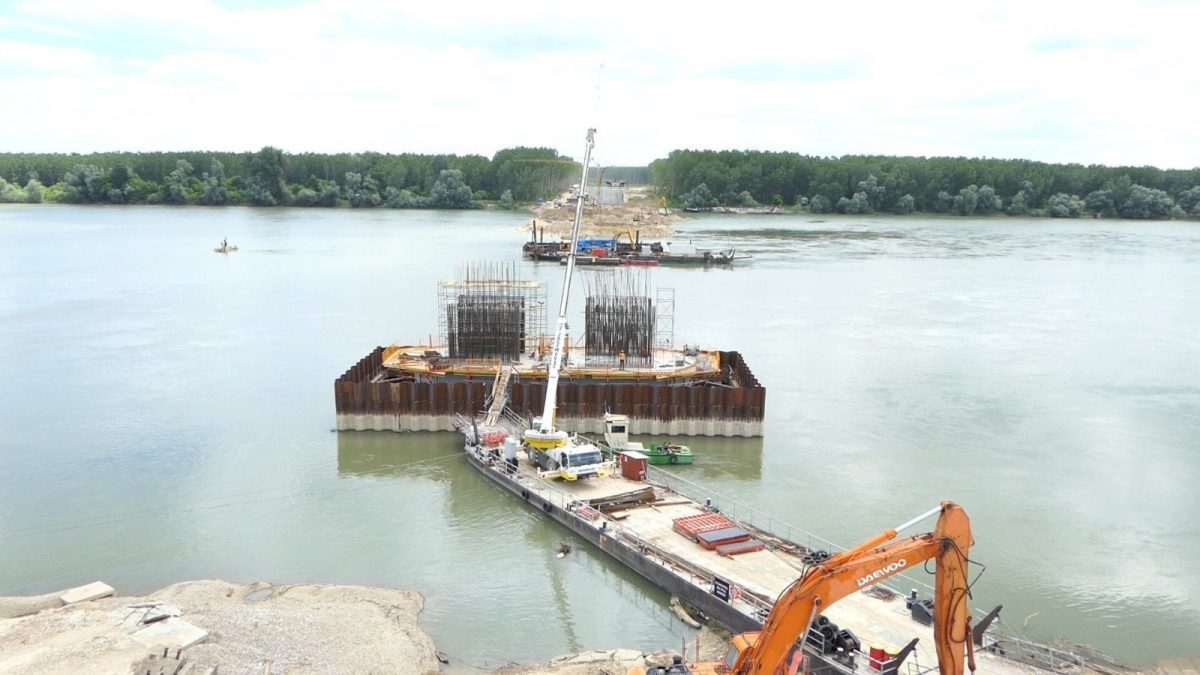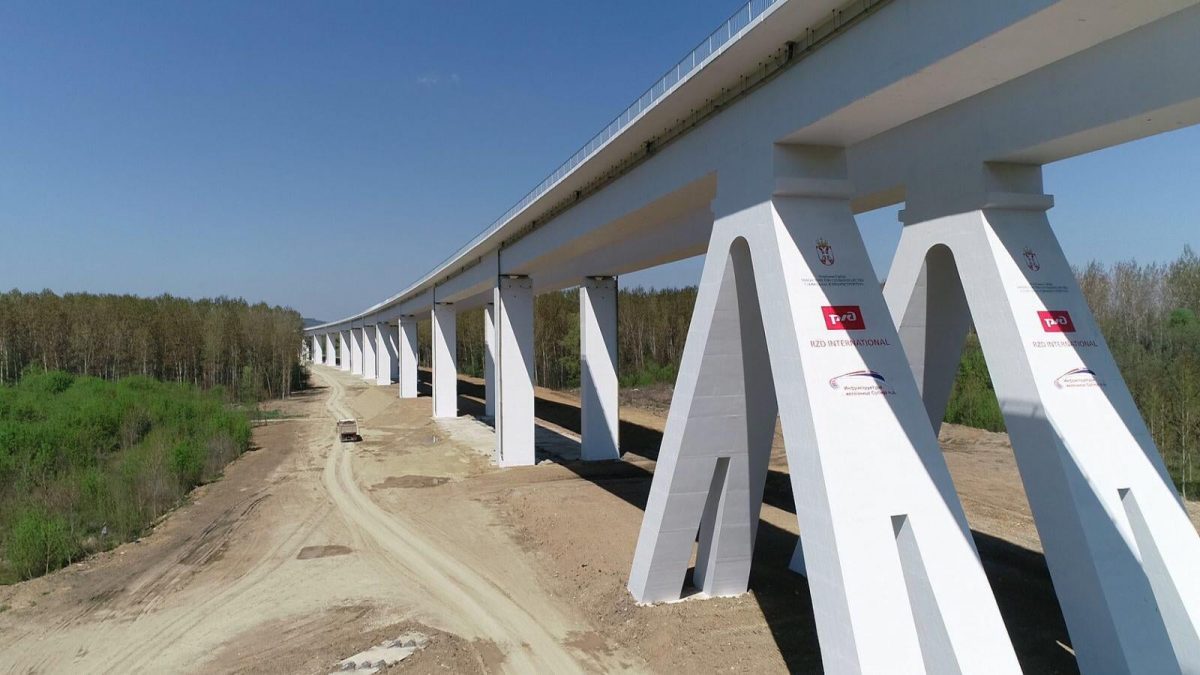As one of the systematically largest ministries of the Government of the Republic of Serbia, the Ministry of Construction has a great responsibility in building a modern Serbia and its economic future.

“The construction sector worked non-stop and regardless of the pandemic. We have managed to maintain the operational level in the construction industry while successfully implementing large-scale capital projects. Only through joint work and cooperation of the entire region under the auspices of various regional initiatives can we bring our economies closer and attract large investments to our countries. The goal of the ministry I helm is to increase the work pace this year as well.”
The recent analyses have shown that the ministry you head plays a crucial role in maintaining the country’s macroeconomic stability. How would you rate the current situation?
Construction, and especially large state investments in building infrastructure, are of crucial importance for maintaining the country’s macroeconomic stability. Ongoing projects are the most significant projects in the last fifty years and we aim to complete the modernization of Serbia, which will be equally developed as the EU members, which is something that we strive to become.
I would like to highlight the period from January to June 2021, which best demonstrate the intensity of works, where a total of 11,515 building permits were issued on the territory of Serbia, a 25% increase compared to the same period last year and 22% compared to the first half of 2019. As of June this year, we have over 80,000 active construction sites. At the moment, close to 1,000 kilometres of highways and expressways are being designed and built. The value of investments in transport infrastructure is around 23 billion euro, which represents almost half of Serbia’s gross domestic product. We are also investing half a billion euros in the development of water transport and water corridors. These are investments in ports and navigation safety, as well as in improving our rivers, so they can be navigable throughout the year. Based on the results so far and the projections for the period until the end of this year, I am absolutely satisfied with the situation in the sector I am in charge of.
At the moment, close to 1,000 kilometres of highways and expressways are being designed and built.
What do large-scale infrastructure projects mean to Serbia in terms of connecting the region with Serbia and vice versa?
Major infrastructure projects we have launched, including the Moravian Corridor, the Kuzmin – Sremska Rača highway section, the Miloš Veliki highway, the future section of Corridor 11 from Požega to Boljare, on the border with Montenegro and the high-speed Belgrade-Budapest railroad, are just some of the projects that are important not only for connecting towns in Serbia but for the entire road grid and regional connections in the Balkans. The development of the regional transport network and the traffic links between the Western Balkan countries and the European Union is one of our priorities. The integration under the Mini Schengen initiative, import and economic growth of the entire region are in our strategic interest. The Government of the Republic of Serbia and the ministry I represent are committed to upholding a policy without barriers, where there is an unhindered flow of people and goods between the regional countries. We can achieve this only by building road and railway corridors, but also by investing in waterways and the reconstruction of ports.

The Belgrade-Novi Sad high-speed railroad, the Belgrade bypass, the Ruma-Šabac-Loznica section, the Fruška Gora corridor, the so-called Highway of Peace stretching from Niš to Priština… These are just some of the ongoing projects and those that have been announced. Realistically speaking, which of those projects will be completed first?
You have listed just some of the most important projects we are currently working on. I would also like to add the Moravian Corridor, the construction of a bridge over the Sava River and the start of construction works on the Sremska Rača-Kuzmin section of the Belgrade-Sarajevo highway, as well as the Valjevo-Lajkovac expressway connecting Valjevo and Kolubara district with the Miloš Veliki highway. We must not forget the large investments in the water sector where we will allocate additional funds to the Port of Prahovo and expanding the capacity of the Port of Bogojevo. We have also reconstructed the Djerdap I ship lock and made it more efficient, and we are preparing to overhaul the Djerdap II ship lock too. All these investments will completely change the state of water transport in Serbia and the region. According to the projections and devised plans, the first projects that we will have been completed by the end of this year are the Preljina to Požega section and Miloš Veliki highway, the latter being exceptionally important for the whole of Western Serbia.
By the end of the year, we will have completed the largest and most valuable project in Southeast Europe – the Belgrade-Novi Sad high-speed railroad – as part of the railway corridor from Belgrade to Budapest, where the Belgrade-Novi Sad commute will last only 30 minutes. Passengers will be transported by the latest Swiss high-speed trains. After talking to my associates, I get surprised quite often by the number of ongoing infrastructure projects that we are currently implementing.
We expect that the construction sector will maintain stable growth by the year-end because that would automatically imply stable growth of Serbia’s GDP.
Has the pandemic affected the real estate sector and how will the construction of the subway impact the (de)centralization of Belgrade?
The coronavirus pandemic has definitely left its mark on the real estate sector. In March and April 2020, during the state of emergency, there was a decline in the sale of apartments in Belgrade and Serbia due to the limited movement of people. In mid-2020, after the state of emergency was abolished, real estate sales began to grow, but primarily in the house sector. On the other hand, according to the data collated by the State Bureau of Statistics, not a single apartment was sold in 20 cities and municipalities in Serbia in the first six months since the beginning of the state of emergency. Today, the data show that buying a property on the outskirts of Belgrade is the most popular, and a lot of people are now interested in building houses, so there are many inquiries for appropriate construction locations.
Regarding the construction of the subway in Belgrade, I think there is no reason to fear even greater centralization. By building highways throughout Serbia, investing in airports outside Belgrade, such as Constantine the Great airport in Niš and reconstructing railway corridors, we are creating an opportunity for all Serbian cities to attract new investors and have new factories. We are building everywhere, not only in Belgrade, and most of the apartments we have built, to provide housing for security forces, are not in Belgrade. By building roads and railways, we create new jobs locally and we are all aware of how important it is to preserve smaller urban areas elsewhere in Serbia. During the pandemic, we became aware of the advantages of living in the countryside. In order to further preserve rural households, we need to continue to build a quality road and railway infrastructure wisely.
How much does the construction sector contribute to the national GDP and what results do you expect to see by the year-end?
Construction was the main driving force behind Serbia’s GDP growth in the first quarter of 2021. This sector not only supports a whole range of construction companies but also employs a large number of workers of various professions. Two-thirds of the 1.7% GDP growth in the first quarter is attributed to the construction sector. The year-on-year growth rate of construction in the mentioned period was around 20 percent, and in the next, second, quarter, that growth will be 38.3 percent. These are record-breaking results if compared to the neighbouring countries that are forced to wait for foreign financial aid or tourists to save their fiscal year. The economic future and the well-being of all people in Serbia largely depend on the construction of quality roads, railways and navigable water corridors. We expect that the construction sector will maintain stable growth by the year-end because that would automatically imply stable growth of Serbia’s GDP.
